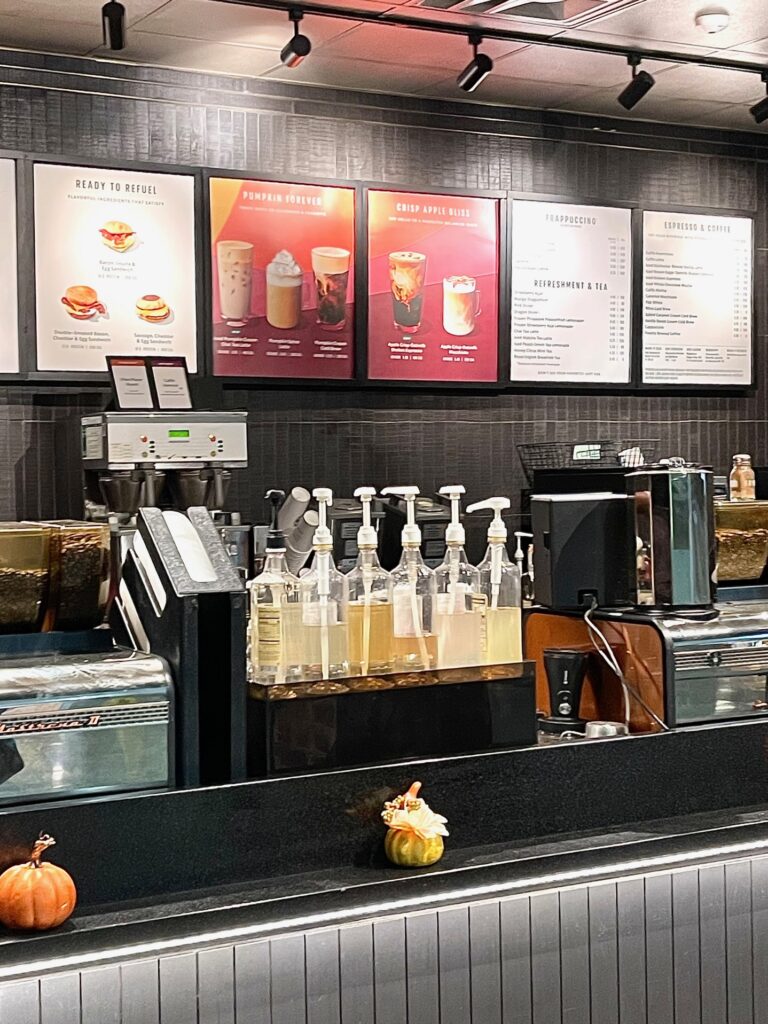An old, familiar scene popped up on my commute through Newark Penn this week – the pumpkins have arrived! As I passed by the Starbucks, the fall décor juxtaposed the hustle and bustle and the menu behind the counter betrayed a sure sign of the season: The Pumpkin Spice Latte.

Two things popped into my mind:
1) It’s still a full-on 80/90 degrees outside, people!
2) How has Starbucks managed to build and maintain the orbit of an entire market around this product?
This season is the 20th anniversary of the Pumpkin Spice Latte at Starbucks. However, the use of pumpkin spice as a culinary concept dates back more than 3500 years.
So – how did Starbucks rally the pumpkin lovers, re-energize the flavor and turn it into a brand staple: Often imitated, never duplicated, and rarely improved upon*?
*with the exception of Jitters in Eagle River, Alaska – you’ll have to join me at an AMA Community Coffee for that story!
Product Development & Launch
Created by the Starbucks team led by Stanford economics alum Peter Dukes, the brand leveraged a tried-and-true autumn staple: Pumpkin Pie and Coffee. The result is the Pumpkin Spice Latte (PSL).
In the fall of 2003, the Starbucks product development team tested the Pumpkin Spice Latte to 100 stores in Vancouver and Washington DC. The following year, the full product placement rolled out across the U.S. Starbucks stores.
The brand leveraged changes to their locations to promote the product. Changes to the colors of the menu, pumpkins, scarecrows, fall minutia in the lobbies, and signage that reflected what we now associated with the fall aesthetic. Samples were given at each location, and the buzz began.
A buzz, I might add, in the early days of social media. In fact, our little history lesson starts in 2003. Facebook did not start using ads until 2006, and Twitter didn’t start until 2010. PSL reigned supreme prior to social media – and has continued to hold on ever since.
In fact, while Starbucks does not report sales on specific drinks – Forbes estimates that Starbucks will make about $100 million in revenue from PSLs this fall alone.
Let’s take a look at what happened from traditional launch to brand-created cultural icon.
Leaning On the Consumer Content for Success
Personally, I attribute at least part of the PSL success on the timing of the launch and the proliferation of social media.
Take, for example, the Peppermint Mocha – launched in 2002 – does not have close to the same cult following as PSL. I would argue that PSL and the divisive nature of the flavor pairing helped Starbucks become synonymous with pumpkin spice.
Starbucks leveraged social media in a highly organic sense – there is limited paid social needed because, during the fall – customers express their #PSL love with an average of more than 3,000 tweets per day, not counting the other platforms. Again, a key takeaway is to leverage that user-generated content. That, however, does not stop Starbucks from leveraging social. The company runs an official, verified Pumpkin Spice Latte Instagram account as well.
There are even anti-PSL social media groups – and you’ll find commentary from haters, fans, and the occasional input from Starbucks. There are even cultural and gender stereotypes in the US associated with the ordering of a PSL. For some reason, it’s a part of American’s social media soapbox. Starbucks has been able to cash in on that soapbox.
Market Impact & Holding the Helm
It’s the latte that launched a thousand products (quite literally). Go to your local grocery store in the next two weeks – and what will you find? Pumpkin spice everything!
But, when you think of Pumpkin Spice, what do you think of first? Starbucks.
Today, the processed pumpkin market size is valued at about $1.34 billion with a compound annual growth rate of 6.5%. The breakdown of the market application as of 2020 shows that beverages currently hold a similar market share as baked goods (just over 30% of the overall market).
That, my friends – is masterful branding.
Since the launch of the PSL One of the greatest opportunities and the most catastrophic pitfalls of marketing is what I call Shiny Object Syndrome. There’s something new in the market, therefore we MUST change what we’re doing to fit the latest trend.
Starbucks never fell victim to this common misstep – they knew they had a winner, a strong winner – and they stood by it. The PSL is the trusty steed by which Starbucks has led the transition to the seasons (second only to the switch to Christmas cups). They know their audience, they know their product, and where they can own the market. They don’t veer from it.
And, since they stayed the course – they don’t have to.
So – ready or not – Starbucks has spoken.
Happy Fall Y’all!
(and Happy Marketing!)
President (FY24)
AMA New Jersey


